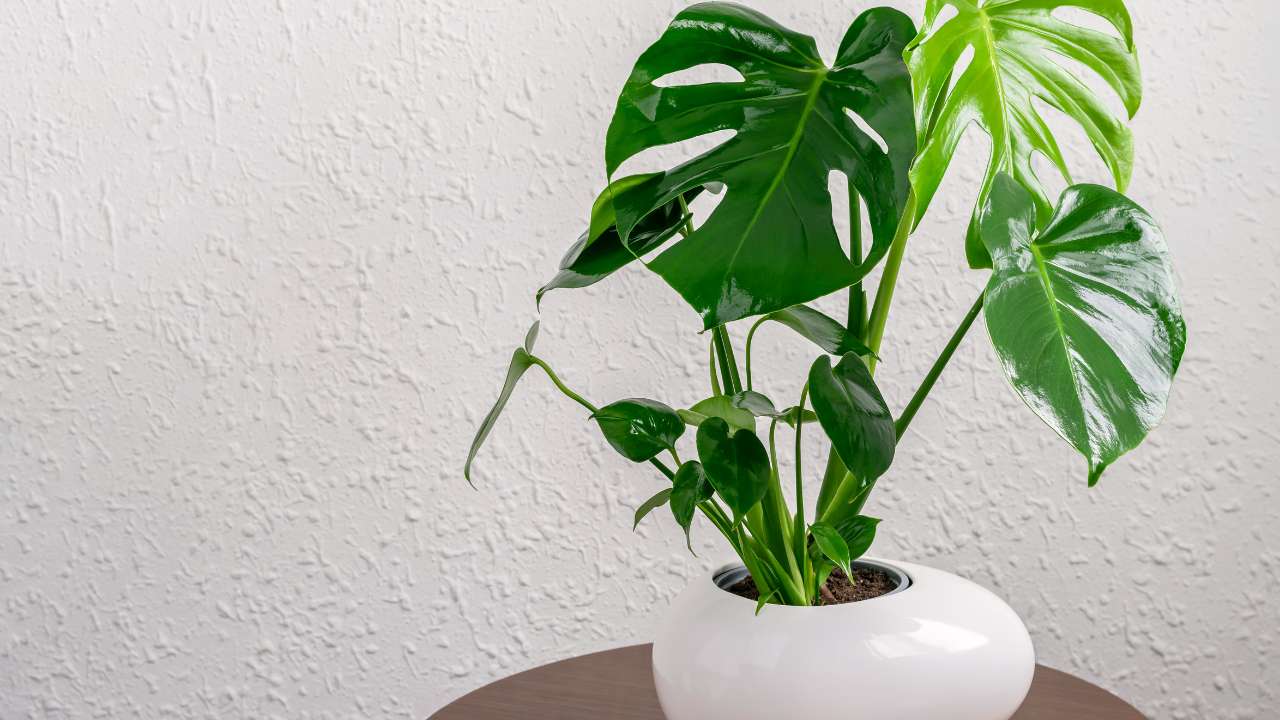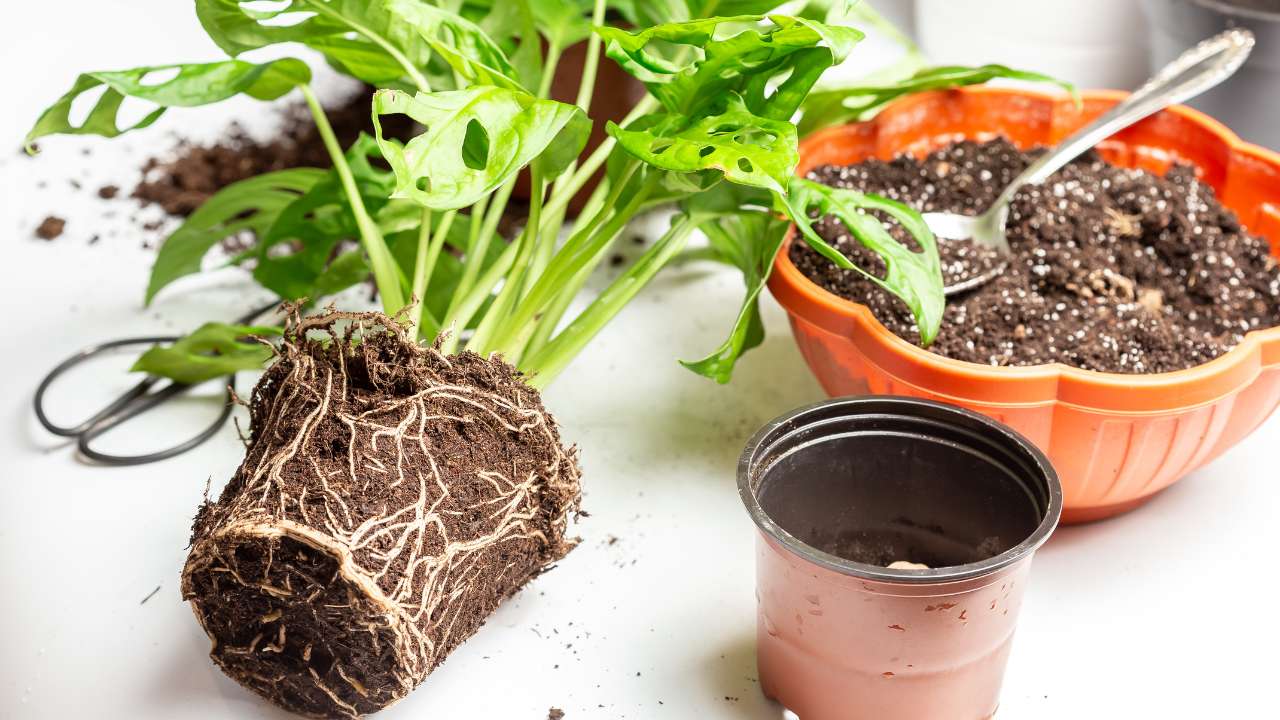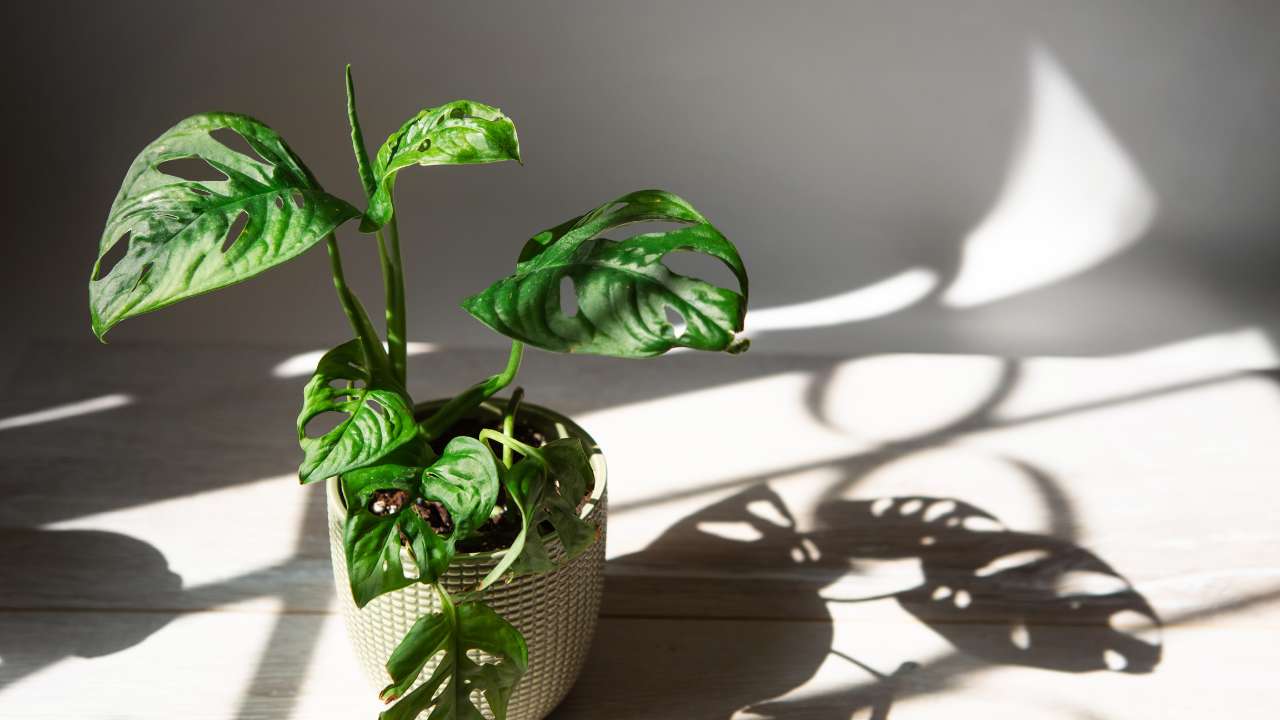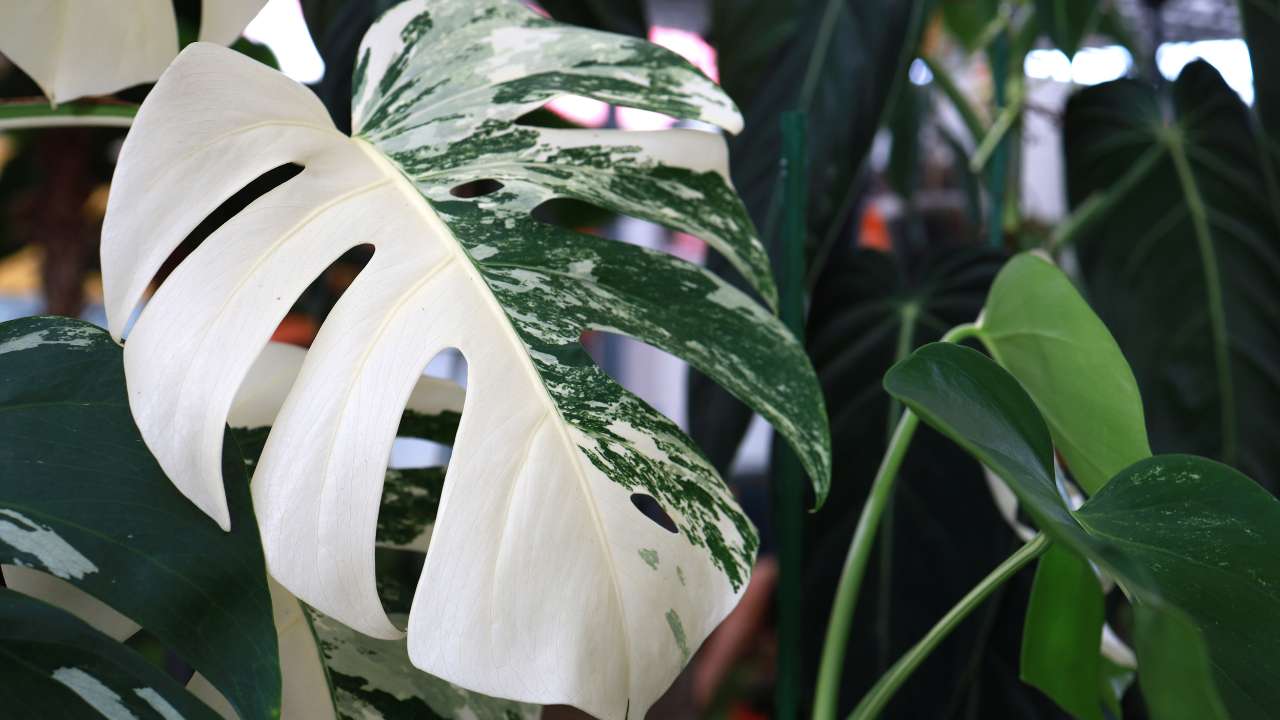.jpg)
Monstera plants' stunning foliage and low maintenance requirements have contributed to their meteoric rise in popularity. They are a favorite among indoor gardeners since they complement various design types. Following the instructions in this book should allow you to keep your plante monstera healthy and beautiful. Whether you're a first-time gardener or merely want to improve your skills, these tips can assist you on your journey.
| Characteristic | Description |
|---|---|
| Family | Araceae |
| Origin | Tropical forests of Southern Mexico, Central and South America |
| Common Names | Monstera, Swiss Cheese Plant, Split-Leaf Philodendron |
| Growth Habit | Large perennial with climbing or trailing vines |
| Flowering | Rarely flowers indoors; produces arum-like flowers when it does |
| Light | Bright, indirect light |
| Water | Water when topsoil feels dry; reduce in winter |
| Soil | Peat-based, well-draining soil |
| Temperature | 65-85°F; avoid temperatures below 50°F |
| Humidity | High, prefers 60% or higher |
| Toxicity | Toxic to pets and humans if ingested |
| Propagation | Stem cuttings in water or soil |
| Pests | Susceptible to spider mites and scale insects |
| Care Level | Medium; needs regular care and pruning |
Acquiring Knowledge About Monstera

There is more than one variety in the Monstera deliciosa family, each with its distinct appearance. Some popular types that are loved by plant enthusiasts are:
Monstera deliciosa
Large, heart-shaped leaves with characteristic holes characterize this classic cultivar.
Borsigiana Monstera
It has smaller leaves and develops more quickly than the deliciosa, to which it is very similar.
Monstera Adansonii
The "Swiss cheese plant" differs from deliciosa in that its leaves are smaller and more perforated.
Monstera Obliqua
Exceptionally fenestrated leaves make this unique kind of a hot commodity.
Monstera Dubia
This species' diminutive, heart-shaped leaves cling to objects when it first emerges from its shingling stage.
Ideal Environment for Plant Growth

Light Requirements
Bright indirect light is ideal for monstera plants. While too much light could cause the leaves to sear, insufficient light can stunt growth and shrink the size of the leaves. Optimal placement allows for all-day filtered light.
Soil and Potting Mix
Soil rich in peat is ideal for plante monstera. The ideal materials to use are pine bark, peat, and perlite. This mixture prevents water-logging and helps retain moisture, both of which are important for healthy root development.
Climate (Heat and Humidity)
For monsters, the ideal temperature range is 18–27 degrees Celsius, or 65–80 degrees Fahrenheit. They flourish in environments that mimic the high humidity (60 percent or higher) of their native tropical habitat. For areas with less humidity, spritzing the leaves or turning on a humidifier can be helpful.
Repotting and Planting Monstera Plants

When to Plant Monstera
-
Select a Suitable Pot:
Pick a container with many holes for water to drain out of it.
-
Getting the Dirt Ready:
Create a soil mixture of peat, perlite, and pine bark for optimal water retention and drainage.
-
Plant Positioning:
Carefully set the Monstera plant in the middle of the pot and carefully cover its roots with soil mixture, making sure it remains upright and stable.
-
Initial Watering:
To help the plante Monstera adjust to its new home, water it well after planting to moisten the soil around its roots and settle it into the soil.
Monstera Plant Repotting

Timing for Repotting:
Plante Monstera benefits from a soil refresh every two to three years, therefore it's a good idea to repot them and then give them more space to expand their roots.
Selecting a New Pot:
To allow room for the roots to spread, select a new pot that is marginally bigger than the old one.
Procedure for Repo:
Preparation
First things first: fill the new container halfway with the soil mixture you just made.
Removing the Plant:
After you've untangled the Monstera's roots and shaken off any extra dirt, carefully remove it from its old container.
Root Care:
Using clean shears, check the roots for decay or illness and cut them as necessary.
Transferring to New Container
Carefully transfer the Monstera plant into its new container and cover it with soil, making sure it is well-supported and slightly compacted to ensure it stays put.
Placing in New Pot:
Make sure any excess water drips off the plant's roots after you soak it thoroughly after repotting so it can adjust to its new environment.
Caring for the Plants

Schedule for Watering
Spring and Summer:
During the spring and summer, give your Plante Monstera a weekly watering. For leaves to develop during the growing season, there must be constant wetness.
Fall and Winter:
In the cooler months of fall and winter, watering should be reduced to every two weeks. The plant requires less water because its growth is slowed by less sunshine and cooler temperatures.
Varieties of Fertilisers and Their Recommended Application Rates
For houseplants, a balanced, water-soluble fertilizer is best.
Regular Feeding:
Fertilize once a month during the spring and summer to promote healthy growth.
During the autumn and winter, when the plant's growth slows down, provide it with a smaller amount of food, perhaps once every two months.
Plant Care for Monstera Species
Techniques for Growing Monstera Plants from Stems
Selection of the Cutting:
You can tell a healthy stem section by looking for a single, unbroken leaf and a minimum of one node, the point at which the stem meets the ground.
Cutting Technique:
To make the most of root growth, cut cleanly right below a node using sterile, sharp scissors.
Ways to Remove a Root:
Water Rooting:
- Rooting a stem cutting in water is as easy as placing it in a glass container of room-temperature water.
- You want the node to be submerged, but the leaf to be floating.
- To keep bacteria and other microbes at bay, it is crucial to keep water clean.
Rooting in Soil:
- Submerge the cutting in soil that is suitable for Monstera plants and has good drainage.
- Moisten the soil and cover the container with plastic to create a humid, greenhouse-like environment.
- Maintain consistently moist, but not drenched, soil.
Tips for Successful Root Development and Planting
Light Conditions:
To promote development without risking leaf burn, place the cutting in an area with strong, indirect sunshine.
Weather and Saturation:
Maintaining a warm and humid atmosphere around the cutting will promote Monstera development, much like a tropical jungle.
Patience and Care:
Four to six weeks is a reasonable time frame for root formation. As the roots grow, keep an eye on how things are going.
Transplanting:
To facilitate root growth and promote additional development, transplant the cutting into a bigger pot after its roots are strong and several inches long.
Resolving Typical Issues
Decaying Grass:
The wilting of leaves could be due to a lack of nutrients, poor drainage, or an excess of water.
Brown Tips on Leaves:
While salt buildup in the soil is another possible cause, low humidity or inadequate irrigation is more often to blame.
Wilting:
Inconsistent irrigation can cause wilting. If you water your plant too much or too little, it will sag.
Common Pests:
We often encounter mealybugs, scale insects, and spider mites, among other pests. These insects can damage plants by leaving behind sticky residues and splotchy discoloration.
Answers to Common Problems

Dealing with Yellowing Leaves:
- Evaluate how often you should water the plant and change it as needed.
- If the drainage pores in the pot are clogged, remove the blockage or add additional perlite to the soil mixture.
- It is crucial to fertilize correctly because nutritional deficits can also induce discoloration.
Addressing Root Rot:
- Root rot can be addressed if you notice that your roots have turned black and have a musty odor.
- Remove any diseased or rotting roots and plant in new soil in a sterile container.
Rectifying Brown Tips and Wilting:
- To increase the air's relative humidity, use a humidifier or spray it often.
- To avoid drowning the soil, it is best to establish a regular watering routine.
Pest Control:
- For pest control, follow the product's directions for use when applying insecticidal soap or neem oil to infestations.
- Plants that are affected should be isolated to stop the spread to other houseplants.
In summary
A Monstera plant will flourish and provide beauty to your environment if you take good care of it. As your plant develops and the weather changes, be sure to modify your care regimen accordingly. Try out several spots and pots to see what works best for your Plante Monstera and your house. Take satisfaction in tending to a little ecosystem in your home while you observe your plant's development and adaptation.



